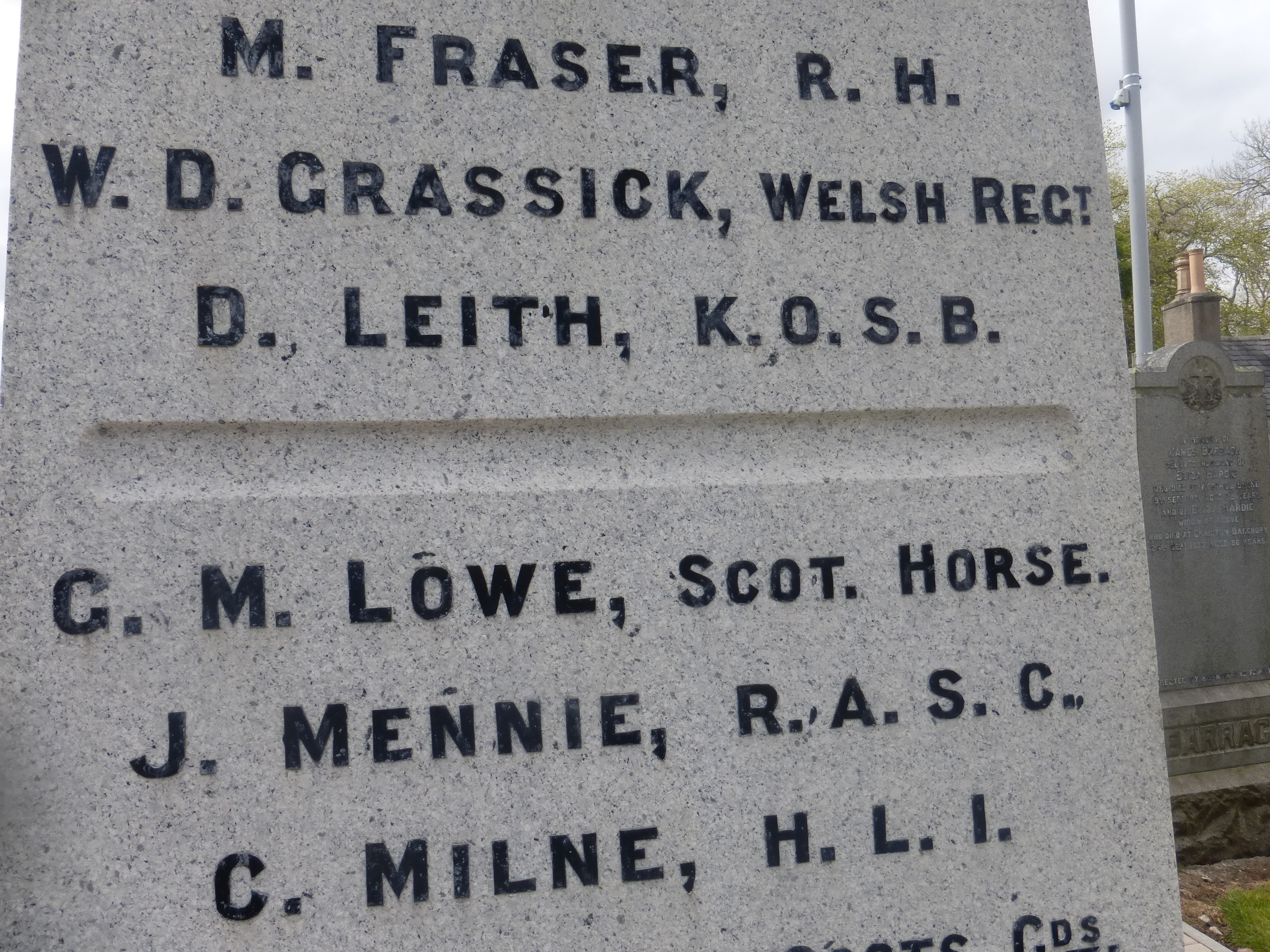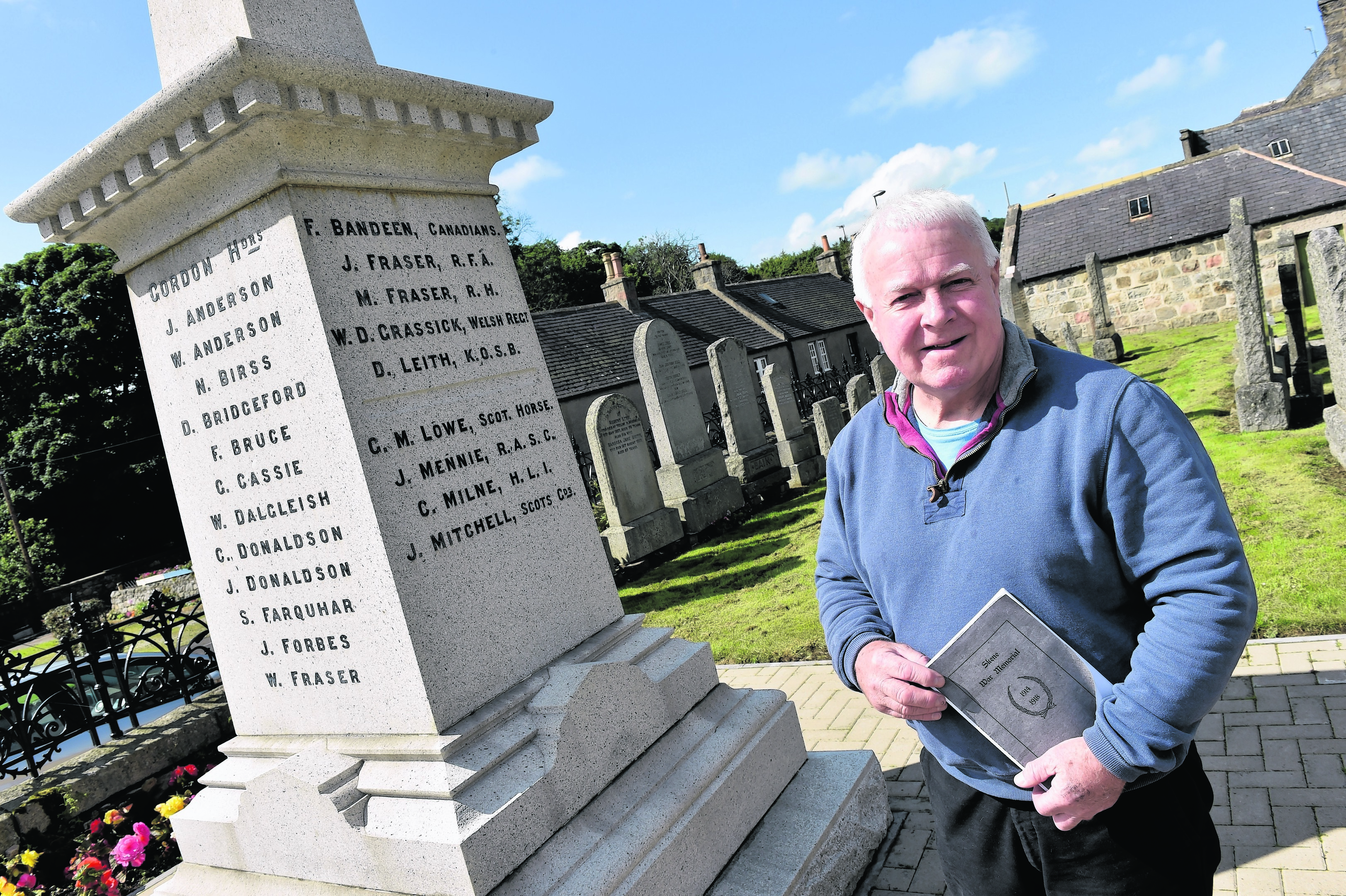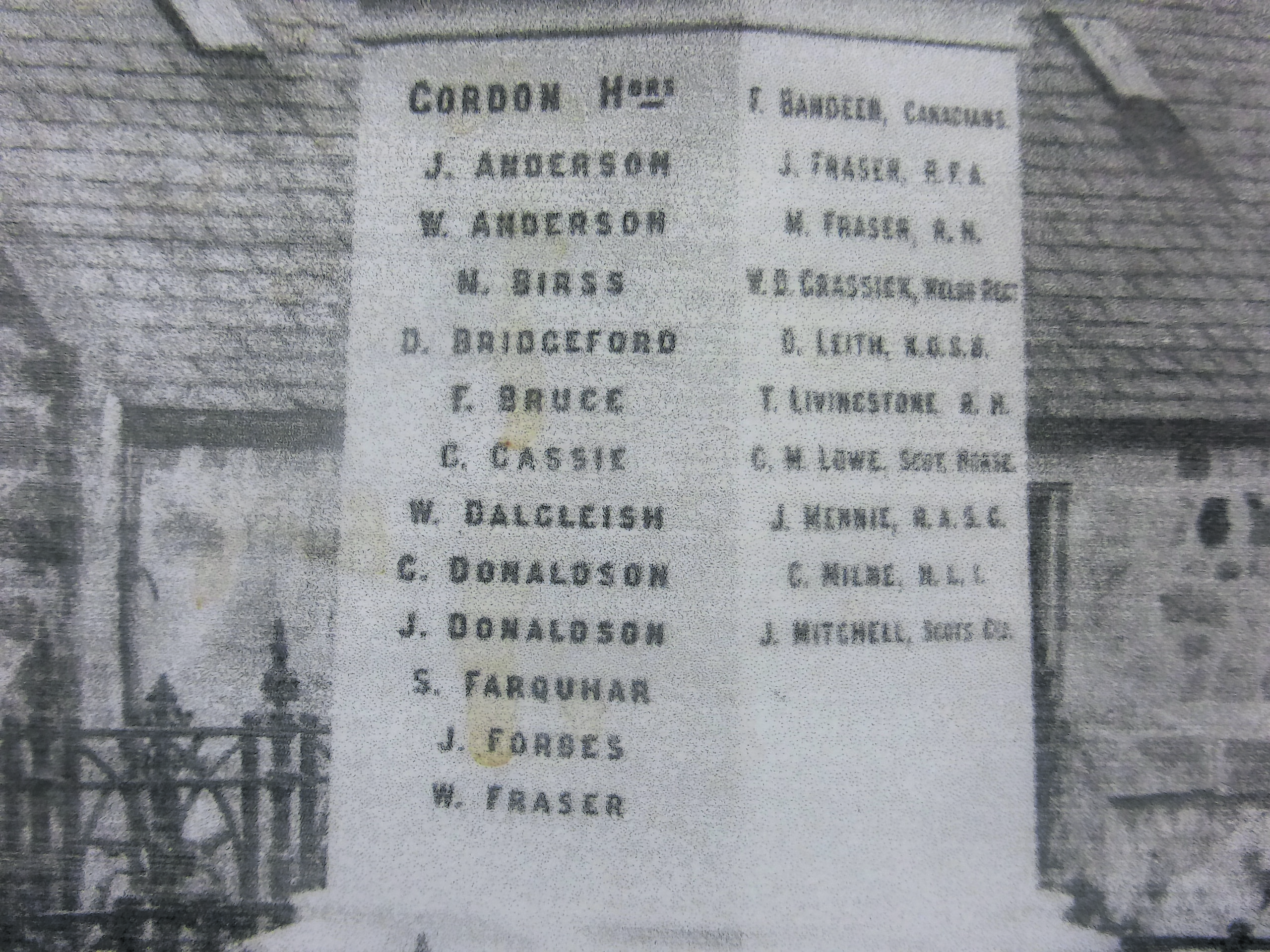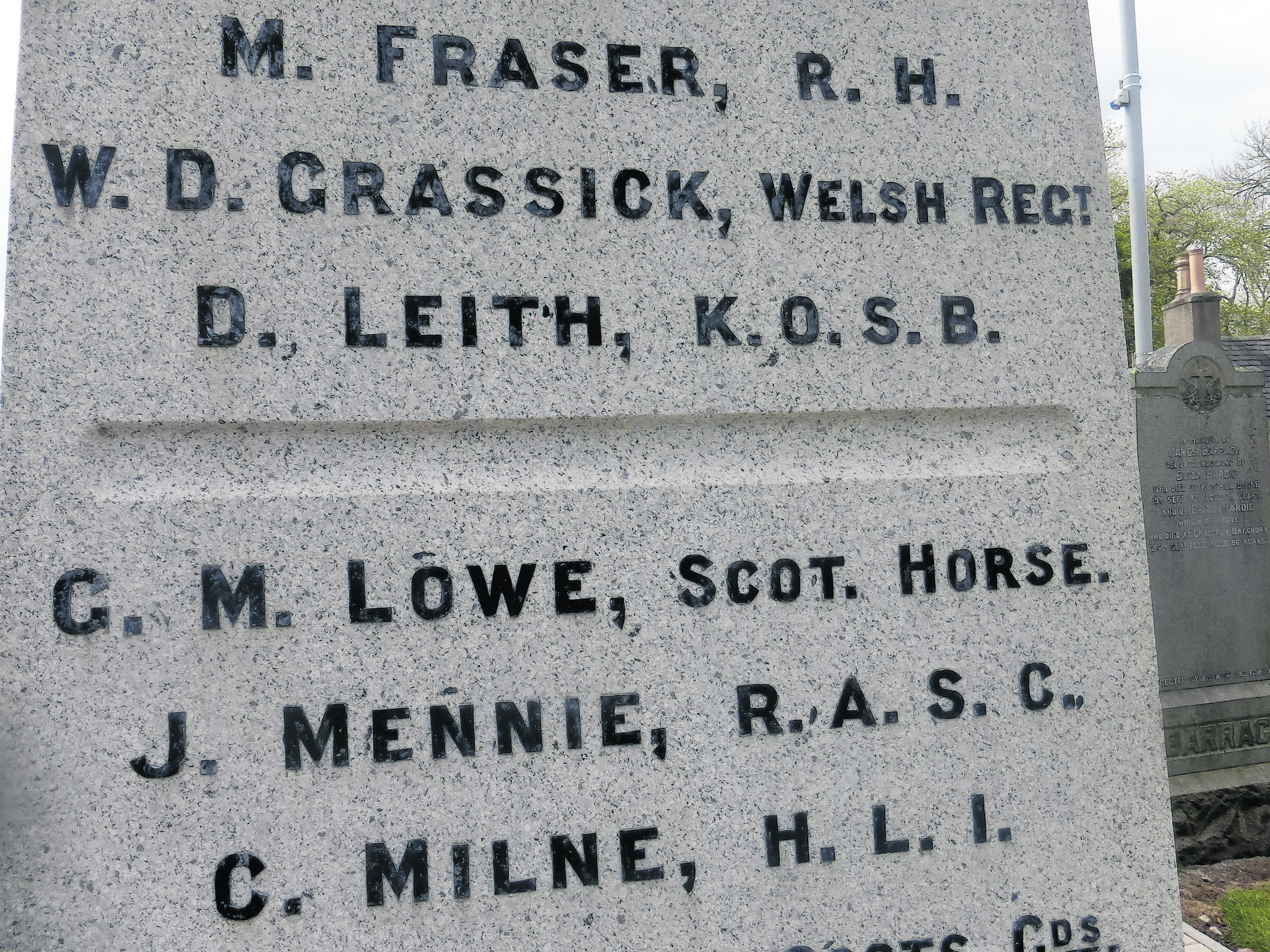In 1921 a stone pillar was erected in the grounds of Kirkton of Skene’s churchyard to commemorate local men and boys who lost their lives during the Great War.
By 1925 there was one less name on the memorial – a mystery that has still not been solved.
Over the years the story of how this name came to be removed from the war memorial has circulated the villages in Aberdeenshire and has no doubt changed since the first telling of it.
It’s a story that propelled retired teacher Colin Johnston into investigating its background after hearing it for the first time recently, after a chance meeting with a former colleague.
“I met him in Sainsbury’s at Bridge of Dee, we started chatting and he asked me if I was still doing research about the Great War. I said yes.
“He asked if I had heard about the story surrounding the Kirkton of Skene memorial. He told me there was a name that had been removed. I had never heard about this and asked when the name was removed.
“He said there was a story about a manny who came back from the grave and found out he was dead. And nobody knew what his name was as it had been removed. “So it was a total puzzle – how do you find out about this?”
The retired teacher tried one or two sources that he thought might have heard about it but to no avail. Then another string of lucky coincidences led him to a big break in his inquiries.
He had gone to Marks and Spencer in Westhill to buy a paper but after discovering they had sold out, he made his way to a nearby Tesco. It was here he met another friend who, after hearing the story, said he should get in touch with Jim Fiddes, chairman of the local history group.
“He didn’t know his phone number so on Monday I went to Westhill Library as I thought they might have contact details for him,” he said.
“And the lady said she thought there was a something on the noticeboard with his name on it. So we both went to have a look – it was a list of events and his name was on it as the chairman of the local history group.
“My eye just glanced down and there on the noticeboard, believe it or not, was a photograph of the memorial in 1922. “It was just a little feature with photographs of the village. So I photocopied the feature, put it on my computer, enlarged it and sure enough there was a name – T Livingstone, RH (Royal Highlanders aka Black Watch).”
Armed with a name, Colin set out to find out as much as possible about the young soldier and why his name was removed from the war memorial.
During his research he discovered Thomas Livingstone was born in 1890 and was believed to have been a resident at Proctor’s Orphanage in Westhill.
He also found out that Livingstone was in France in 1916 and then transferred to the Middle East soon after. He was later declared unfit for service in 1917.
WHERE DID HE GO AFTER THAT
“Then he just vanishes. Where did he go after that?” Colin said.
The Press and Journal was also able to uncover some facts about Thomas Livingstone from the British Army World War I Pension Records 1914-1920. Documents show Thomas Livingstone was a Private with The Black Watch and was a shoemaker by trade. He enlisted in 1908, aged 18, in Perth.
The documents also revealed that he was married on December 24, 1915, to Annie Russell and was badly wounded in the leg. He was discharged due to the gun shot in 1917.
As far as the story behind why his name was taken off the memorial, that still remains a mystery.
The most common story Colin has heard is that the soldier returned to Skene after hearing that some of his friends had died.
He went to the memorial only to find his own name there. “So what had happened? Why did they assume he had been killed?,” Colin said.
“The fact that he enlisted in Perth with the Black Watch is strange too. Maybe there was some relative or relations there or maybe if he was in an orphanage, maybe he had no relations that would make him stay in the north-east.
BECOME A PART OF FOLKLORE
“My friend who originally told me the story met someone recently who was connected to the church in Kirkton and he discovered a little booklet that gives a list of all the names on the memorial. It had a little picture of each name apart from T Livingstone who is not mentioned at all. “The pamphlet was produced in 1925 so something has happened between 1921 and 1925.”
One of the most famous cases of soldiers being falsely reported dead is that of writer Robert Graves who was badly injured during the Somme and declared dead by an officer at a dressing station.
His body was placed behind a wall until they had the time to bury him.
Colin said: “As it happens, a day or so later, an orderly went past and saw he was still alive and he was saved. But a notice of his death had already been sent back to Britain.
“He arrived back in Britain and his death had been announced. When he was in hospital in London his mate came in one day and said ‘would you like to see your obituary?’”
Colin has spoken to a number of local people to see what recollections they might have about this story of the missing name.
Two centenarians that he spoke to had vague memories of the story. He said it seems the story has become a bit of folklore.
“Most likely that folklore or myth has a grain of truth in it, that he did come back and find his own name there.”
Another piece of evidence to support this claim is the way the name has been removed – it has not been done in the heat of a moment or by someone with a spite against him. “It has been beautifully excised,” Colin added.
UNDER A FALSE NAME
“Apparently at one time they considered re-building the whole monument but that was maybe going too far, so the name was just excised.”
So far, Colin has been unsuccessful in finding out anything about Thomas Livingstone’s whereabouts post 1917.
Checks whether a Thomas Livingstone is buried in either Aberdeen or Aberdeenshire has turned up no leads at all, and conversations with people with the same surname still living in the area have not had any connections.
One possibility that Colin has considered is the fact that the name Thomas Livingstone does not exist post-1917.
Like many soldiers did at the time, he could have enlisted under a false name.
“There were a lot, probably in the region of 20,000 men, who disappeared in the British Army who weren’t killed in the war who registered under false names,” Colin added.
“They wanted to create a situation where they could just disappear. And there were people who deserted and they got away with it.
“My friend was at the Menin Gates some years ago and he heard a voice at the 8pm ceremony. He was Australian and he said ‘whose name are you here to see?’
“And the guy said ‘My own’. He said ‘I deserted in 1917 and I got away and made it to Australia. I laid low until there was an amnesty and when I saved up, I decided I would come and see my name.’ And sure enough there it was.
“I’ve been doing quite a few presentations on war memorials in the north-east and the more I’ve been delving into it, the more strange stories I’ve found.
“I spoke to a former pupil of Dyce Academy who presented a dissertation on war memorials in the north east of Scotland about this one at Kirkton of Skene. Her initial reaction was that she has never come across something like this, a name being removed. So it is a very strange one.”
If you have your own account of the story of the manny from the grave, or have any details about Thomas Livingstone – cheryl.livingstone@ajl.co.uk or phone 01224 343274.



